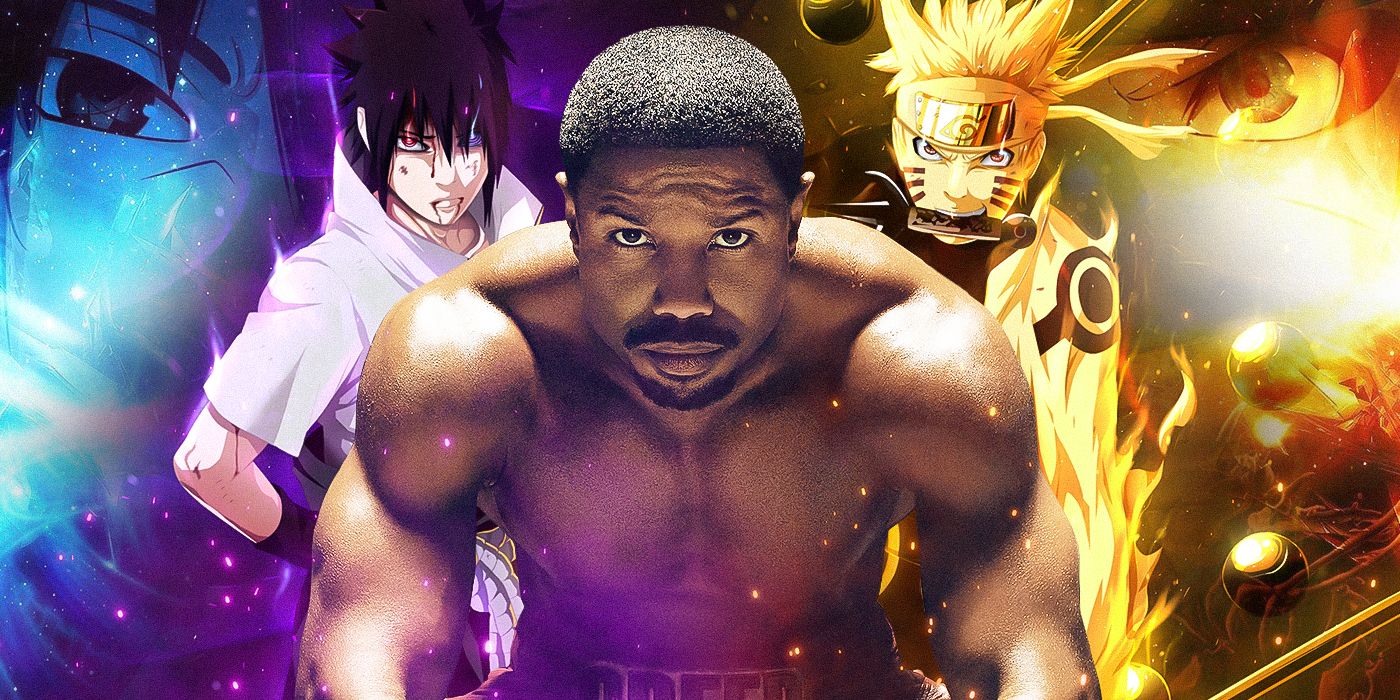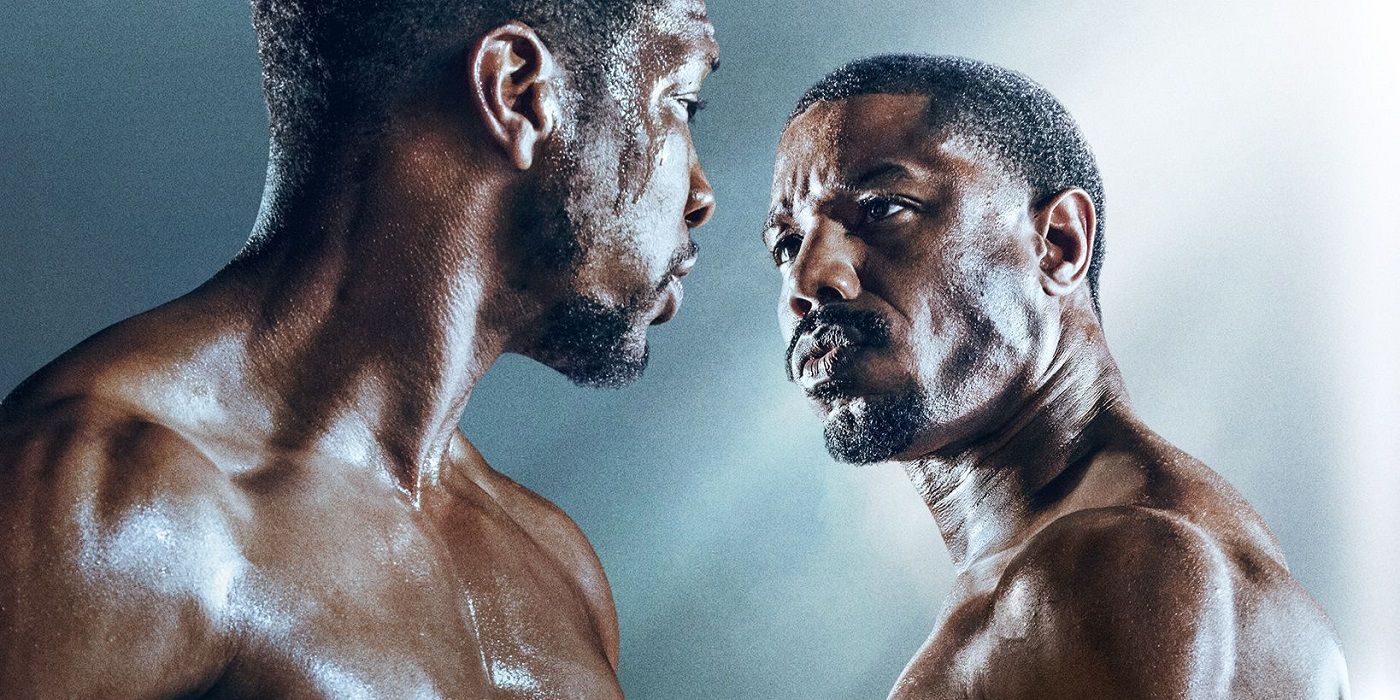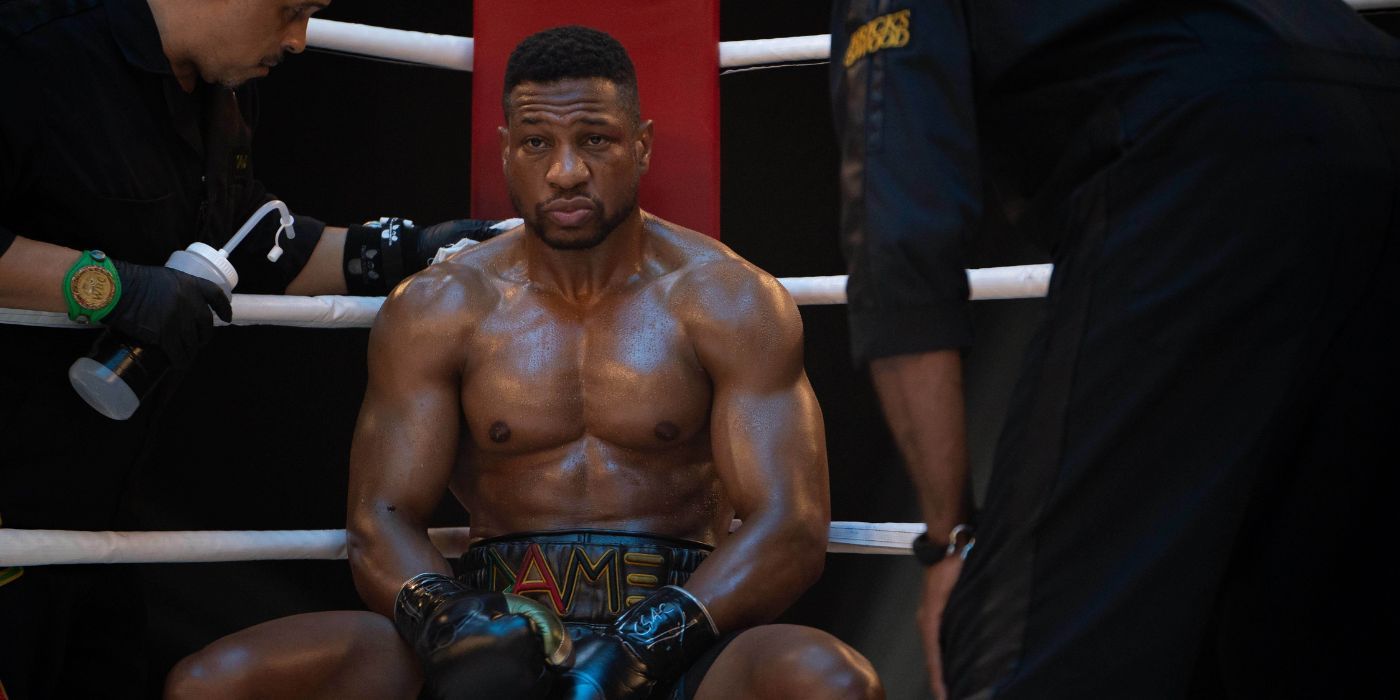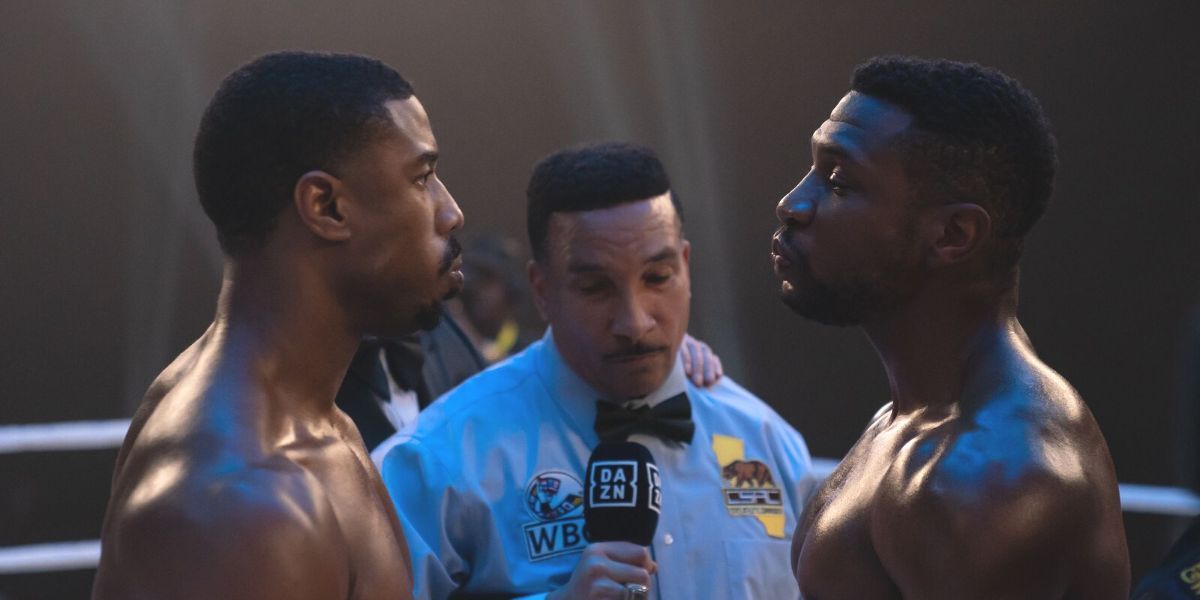Editor's Note: The following contains spoilers for Creed III.
For years, Michael B. Jordan has been a vocal fan of anime and his directorial debut, Creed III, features incredible influence from popular Shonen series. The action star and new director made his mark on the Rocky franchise through his compelling portrayal of Adonis Creed and now, he has further cemented his legacy with the creative direction he has taken the Creed series. Shonen anime are defined by exciting action and captivating underdog stories, making them the perfect source of inspiration for live-action epics. Jordan's stylistic cinematography, choregraphy, and directing choices are incredible homages to some of the most popular anime franchises, so let's jump into the ring to see how Creed III highlights the best of Shonen and live-action sports films.
A Bond Between Brothers
The overarching conflict between Adonis Creed and Damian "Dame" Anderson (Jonathan Majors) was influenced immensely by Naruto, one of the most popular and recognizable anime of all time. Majors recalls how Jordan used anime as inspiration for creating the layers of intricate conflict between these two characters. Dame and Adonis were formerly brothers but later became bitter rivals. "They get to a point in the fight, in their battle, where everything seems to fall away and there's this idea that there's the fight that's going on externally and there's a fight that's going on internally and then there's perhaps another fight that's going on top of it that's more meta, more spiritual, more mystical." For fans of Naruto, these thematic concepts and character dynamics are clearly inspired by some of the most integral relationships in the series. Dame and Adonis parallel the conflicts between Kakashi and Obito, as well as shades of Naruto and Sasuke. This is most apparent in the final fight scene between Adonis and Dame, which is an homage to the final fight between Kakashi and Obito, one of the climactic battles of the entire series.
Before jumping into the parallels seen in the actual boxing match, the buildup of conflict and resentment is also an integral facet of the homage. Adonis and Kakashi take on similar roles in their relationships with Dame and Obito respectively. Both pairs were childhood friends, but external conflict forced the two apart. Obito was presumed dead for years and Dame was sent to prison for nearly two decades. While the two were absent from their normal lives, Adonis and Kakashi were able to become highly respected in each of their fields. Adonis would become undisputed heavyweight champion and Kakashi would become one of the strongest ninja in his entire village, later even becoming the elected village leader. Both Dame and Obito felt bitter resentment at their friend for attaining the goals that they also had, feeling robbed of the life they felt they deserved. In turn, Kakashi and Adonis felt responsible for their failure to protect and save their friends, feeling like they had abandoned their brother. With decades of regret, anger, and frustration built up between these characters, the tension is palpable when they finally engage in their final battles. The story of friends becoming enemies is one of the most compelling narratives in any film and Creed III's anime inspiration makes it one of the most engaging examples of this type of storyline in a movie.
The final fight between Adonis and Dame feature many tributes to the final fight between Kakashi and Obito. As the rivals fought against each other, the multiple layers of conflict and emotions rise to the forefront. The characters all transition between their present selves and their younger selves, highlighting the inner and external conflict they both face. They aren't just fighting each other in the present, they are attempting to resolve the conflict from their youth while trying to claim their own futures. Jordan takes this final fight to new frontiers with the highly stylized choices he made in the design of the set piece. As the two boxers begin to get into the zone, the background falls away behind them. The crowd disappears, the music stops, the referees and rounds are irrelevant as the two slug it out. The stark emptiness of the background is reminiscent of Kakashi and Obito's final fight, which takes place in a pocket dimension that presented a void-like backdrop as well. As the fighters occasionally slip into their younger selves and prison bars appear behind the ropes, the eye-catching visuals make for one of the most memorable and deeply emotional matches in the entire Rocky franchise.
Moments of Shonen Hype
Anime influence is seen in various moments throughout the film as well, not just in the overarching conflict and major set pieces. In their final brawl, Adonis and Dame spend several beats expressing ferocious screaming at their opponent. Any anime fan worth their salt knows that this moment was reminiscent of the Shonen anime feature of yelling in order to gather energy. In other Rocky films, they kept these moments realistic, as moments of athletic intensity between two fighters. However, in this film, it felt like an homage to Shonen because of how the scene was shot. As both fighters went back to their corners, most other boxing films would have featured a moment with their ring man giving them advice. But in stylized fashion, the scene transitioned into the deeply intimate fight that focused solely on the two combatants. As Duke would mention, Adonis needed to stop boxing and start fighting, making the actual brawl feel like it belongs in a live-action Dragon Ball movie just as much as a Rocky film. The tribute is made even more apparent when Adonis lands a powerful gut punch on Dame that was shot to look just like the punch Goku landed on Frieza. In addition to that specific punch, there's another moment where the two boxers land straight punches that connect with each other's faces simultaneously, again something seen in anime like Dragon Ball and Naruto, respectively.
Jordan credits a number of other anime, such as Hajime no Ippo and My Hero Academia as further sources of inspiration. In addition to the complexity of the bonds of brotherhood in these series, Jordan also took some of the most dynamic visuals and made them his own. The boxing motions of the titular Ippo can be seen in the way that Dame moves around the ring, ducking and weaving with added visual flair that was not previously seen in Creed films. With close up, slow motion shots of the fighters and their gear before their match and the intimately brutal shots of certain power punches, Jordan added new and visceral intensity to the fight scenes. The matches in Creed III weren't just your typical boxing matches, but were complete anime brawls.
At the end of the movie, the handshake that Dame and Adonis share features a minute detail that anime fans not immediately recognize. They begin their handshake by dapping each other's extended index and middle finger in a motion reminiscent of the Seal of Reconciliation, the hand motion used by Naruto characters to signify the end of a sparring match. In Naruto, the symbol helped mark the end of the long-lasting conflict between Naruto and Sasuke, yet again two former brothers-in-arms who spent years in conflict. The hand motion was used to signify the end of the long-lasting conflict, much inn the same way that the handshake between Donnie and Dame is a moment of reconciliation and forgiveness between the two former brothers.
Jordan's debut in the director's chair has been a masterclass in using anime as inspiration for live-action sports films, pushing the boundaries of what sports epics can look and feel like on the big screen. Long time fans of both Rocky and anime should be excited about the creative and stylized direction Jordan has taken and will continue to take in his filmmaking.




